I began my third day in Israel with a scrumptious breakfast that I had purchased the prior night from Village Green (Village Green Restaurant). Chef Onri was kind enough to prepare the sweet and savory treats in advance, due to the fact that my day tour would start before the restaurant opened for breakfast. My delicious breakfast consisted of a carrot spelt muffin and a huge spelt pastry with spinach and homemade cheeses(cashew, almond, soy). I really enjoyed both of these! The spinach bread was accompanied by two sauces: one sweet and one spicy olive tapenade. Absolutely superb! The vegan restaurant offers some wonderful breakfast menu items such as pancakes or scrambled tofu. They also offer burgers, pizza, and quiche on their day menu; and crispy tofu, seitan fingers, and more on their evening menu. A shop within the restaurant sells jams, teas, and various other products.
Promptly at 7am, my guide arrived and then we were whisked away to the day’s tour of Old Jerusalem. The tour van first made a stop at the Mount of Olives. From a different vantage point than the prior day’s City of David tour, we saw the panoramic view of the Temple Mount, with the shiny gold Dome of the Rock glistening in the sunlight.
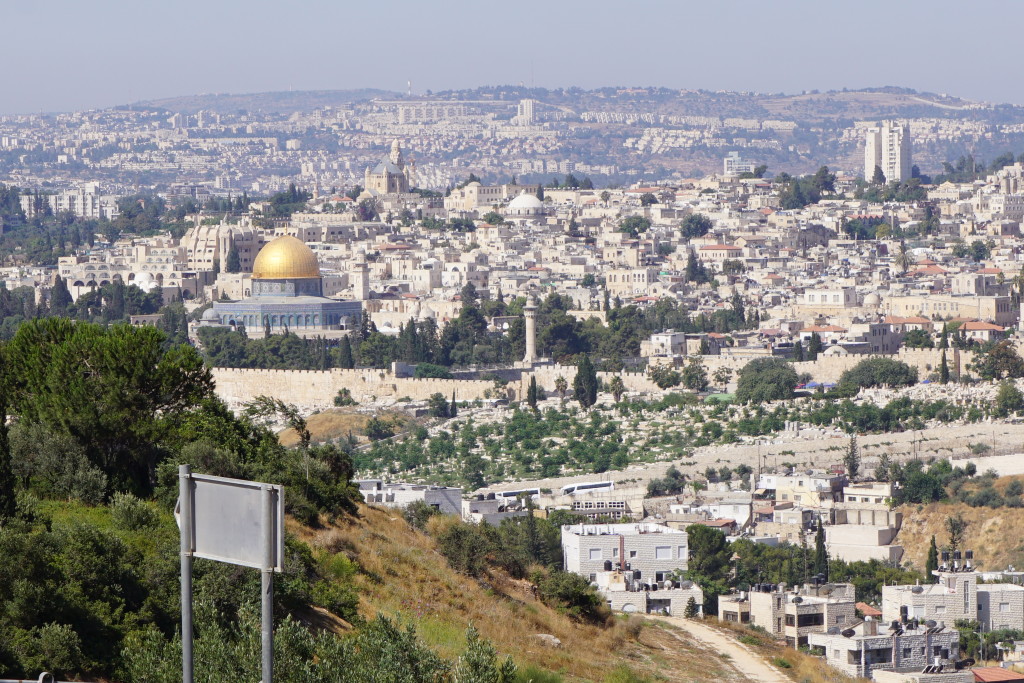
The tour van then proceeded to Old Jerusalem. We arrived at the Lion’s Gate, one of seven gates in the old city walls of Jerusalem, located in the east wall.
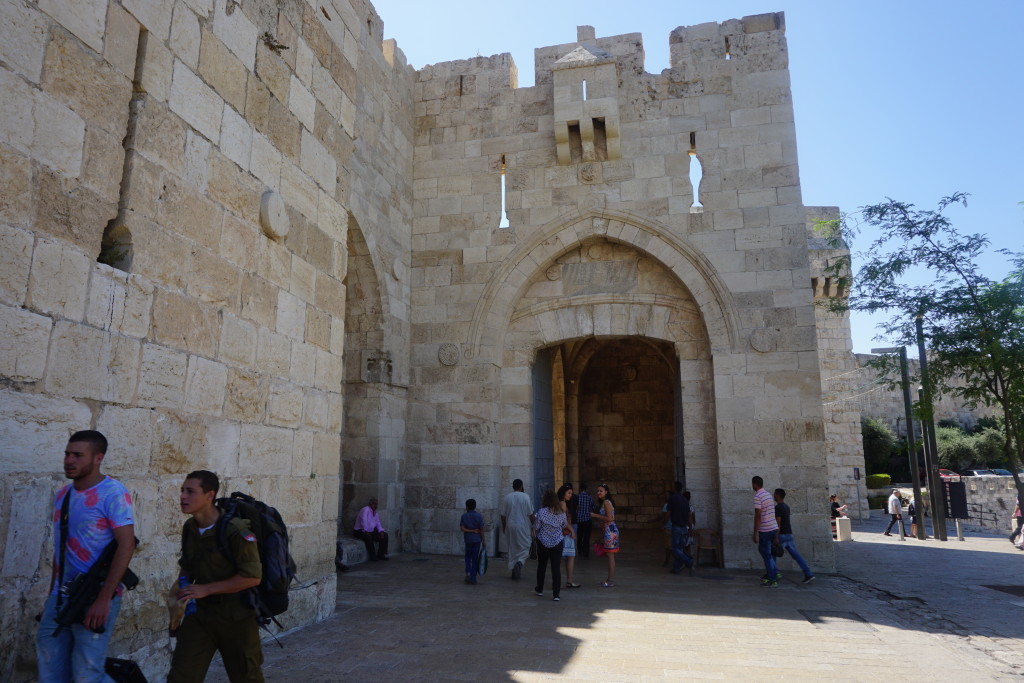
Our first stop was the Church of the Holy Sepulchre within the Christian Quarter of the Old City. This was one of the top sites that I was looking forward to visiting the most and one of my vacation highlights. The site is venerated as Calvary where Jesus was crucified. The church grounds is also thought to be the place where Christ was was buried and resurrected. The last four stations of the cross from the Via Dolorosa path, representing Jesus’ Passion are found in the building. Greek Orthodox of Jerusalem are headquartered here, although the building is controlled by several Christian denominations. During the 2nd century, Roman emperor Hadrian had a temple built here to hide the burial place of Jesus. Christian emperor Constantine, replaced the temple with a church around the year 325.
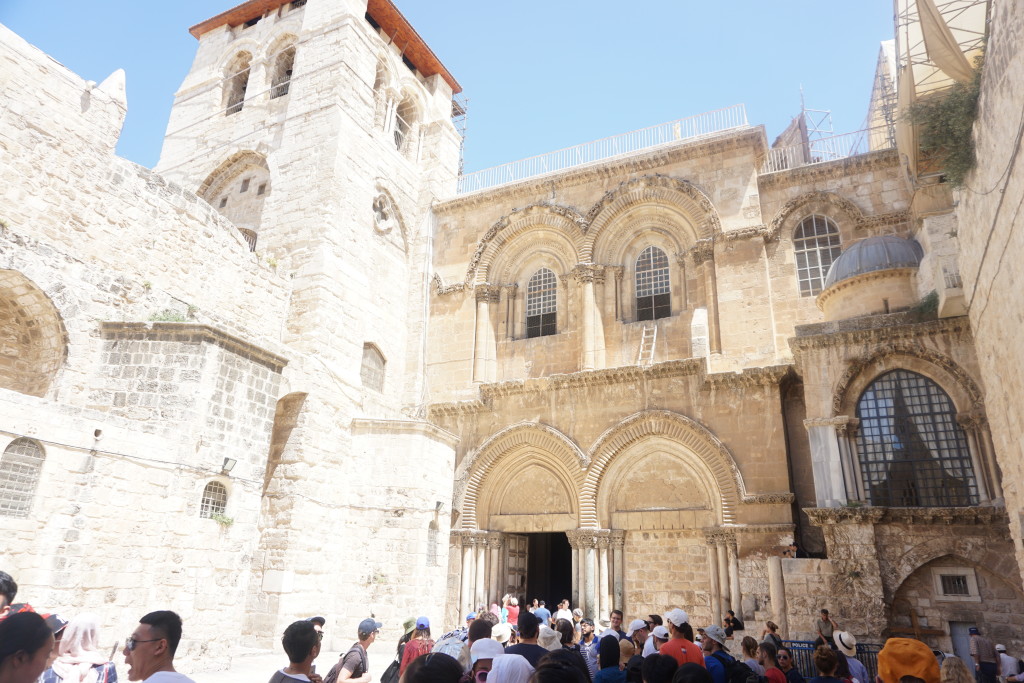
A cross lays outside the entrance, depicting Christ’s crucifixion.
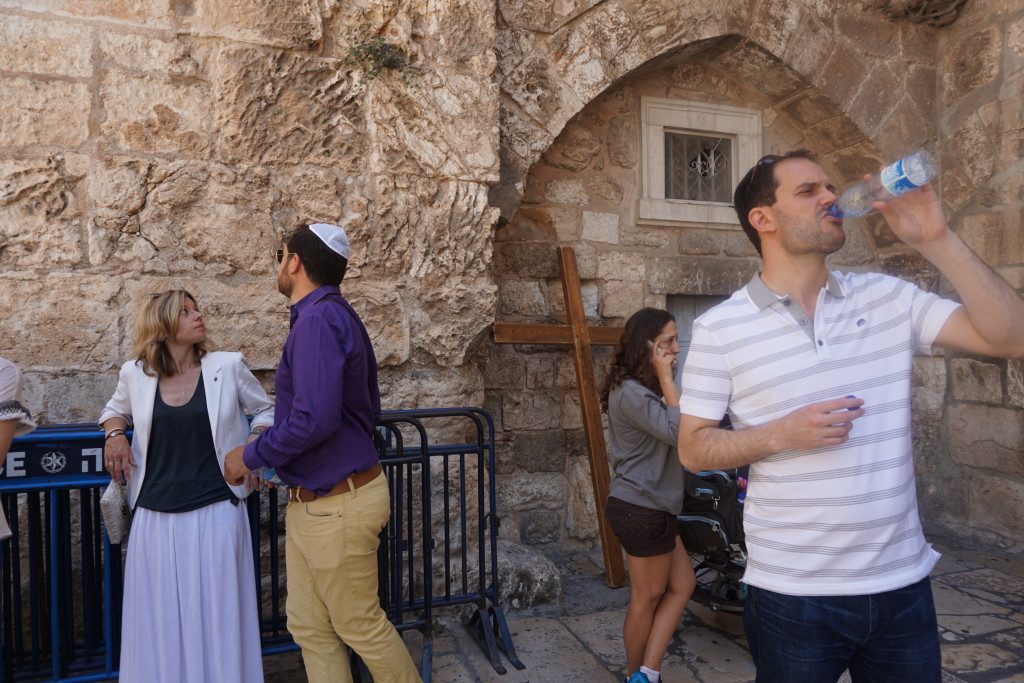
Upon entering the massive church building, visitors first encounter the Stone of Anointing, where Jesus was anointed. According to tradition, this is the spot where Joseph of Arimathea prepared Jesus body for burial.
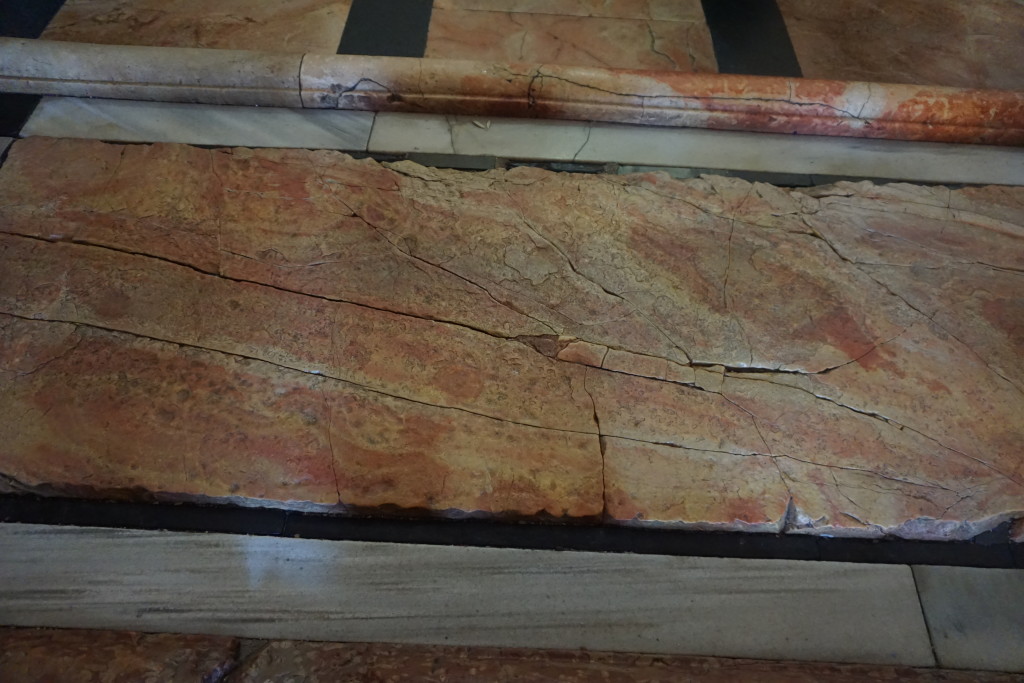
Towards the back of the ground level rotunda, a small chapel is found. Eastern Orthodox, Roman Catholic, and Armenian churches maintain control over it. The two room chapel is believed to hold a portion of the stone that sealed Jesus tomb and the tomb itself.
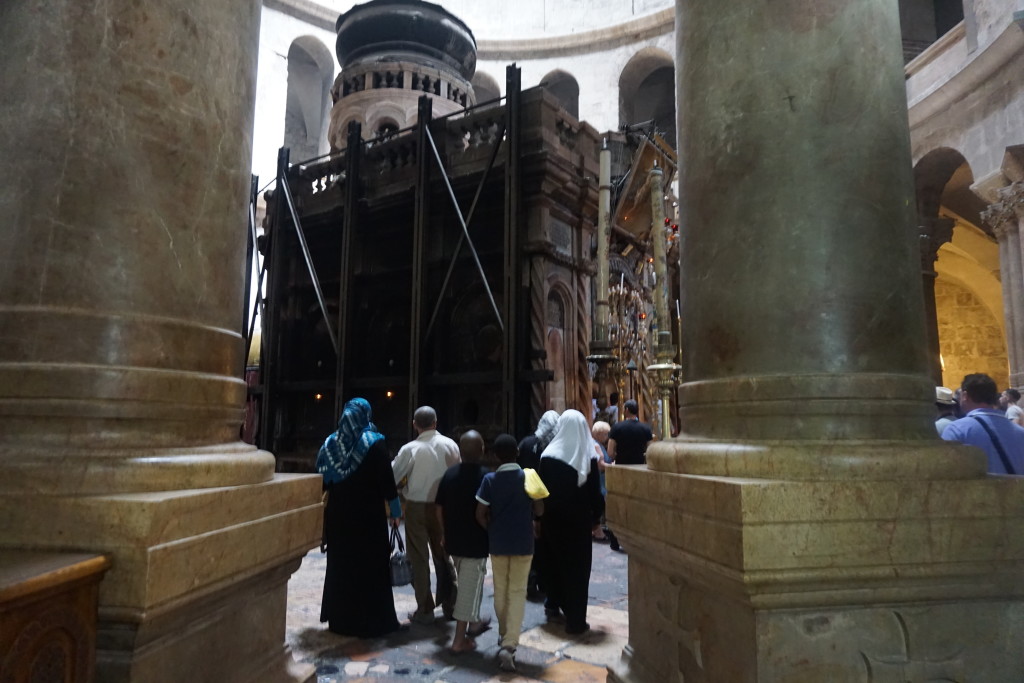
The first stone is visible from outside the chapel entrance.
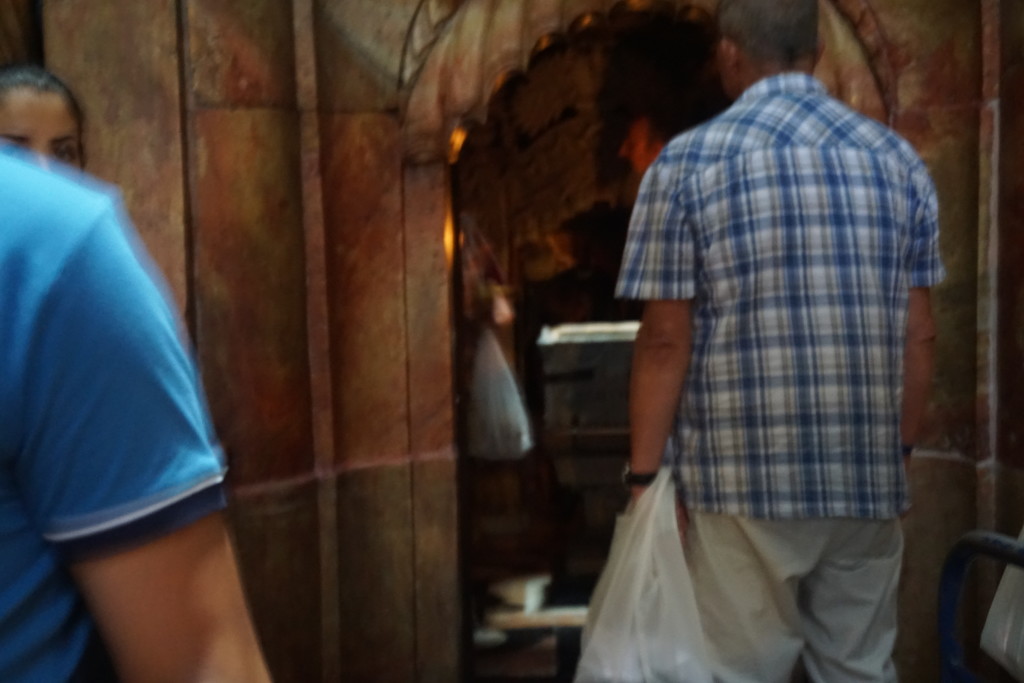
A stairway leading to Golgatha is located south of the altar. I climbed the steep stairway to the second level. Here I found the site of Jesus’ Crucifixion. The main altar belongs to the Greek Orthodox and it is there that the Rock of Calvary (the 12th Station of the Cross) is found. The rock is visible under a glass covering on both sides of the altar. Faithful visitors may kneel down under the altar, place their hand inside a hole, and touch the rock which is believed to mark the spot where the cross was raised. To the left of the altar is a statue of Virgin Mary which is believed to be the location where Jesus body was removed from the cross and given to his mother.
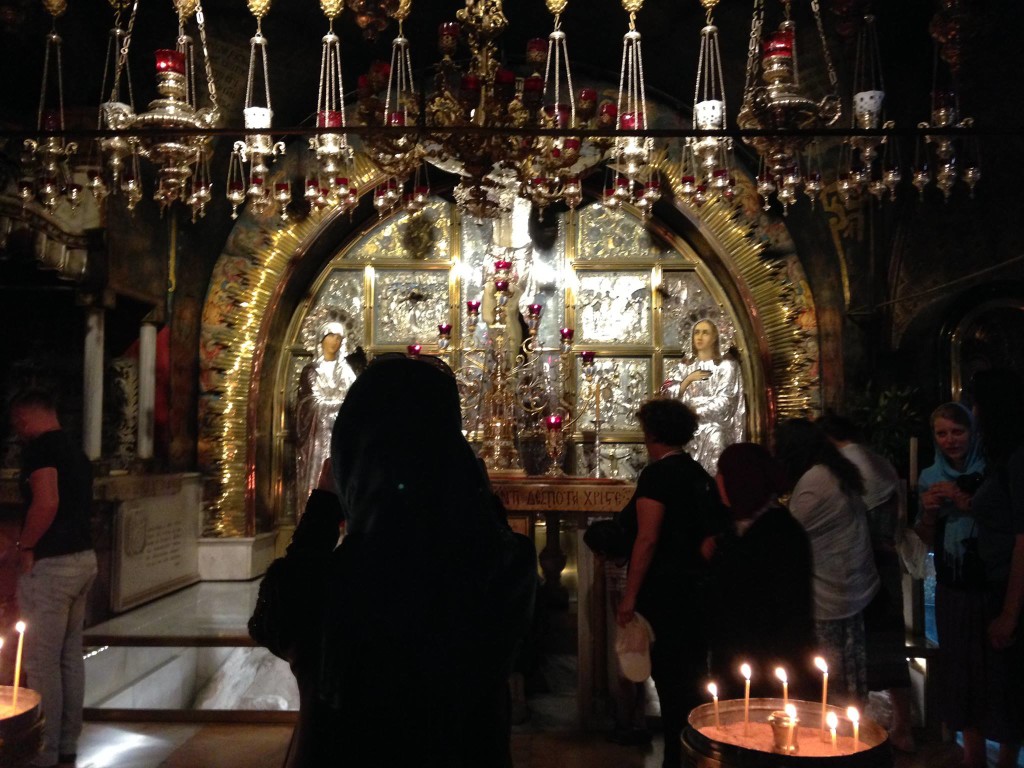
My tour group then exited the church after an emotional and profound biblical experience. Our guide led us through a maze of tunnels and passageways of Old Jerusalem’s Christian and Jewish Quarters. A multitude of gift shops line the streets.
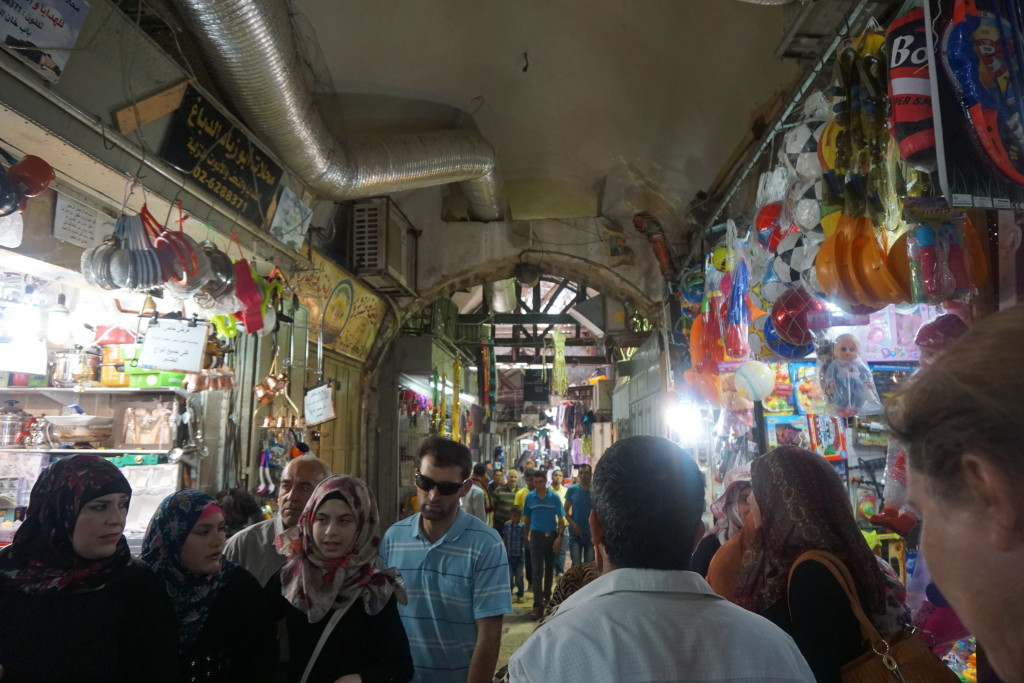
We arrive on the Via Dolorosa. This “Way of Sorrows” street is thought to be the path that Jesus walked as he carried his cross on the way to his crucifixion and subsequent resurrection. Christian pilgrims honor this 600 meter route from the Church of the Holy Sepulchre to Antonia Fortress. Nine Stations of the Cross mark this windy path, while five additional ones are located within the church.
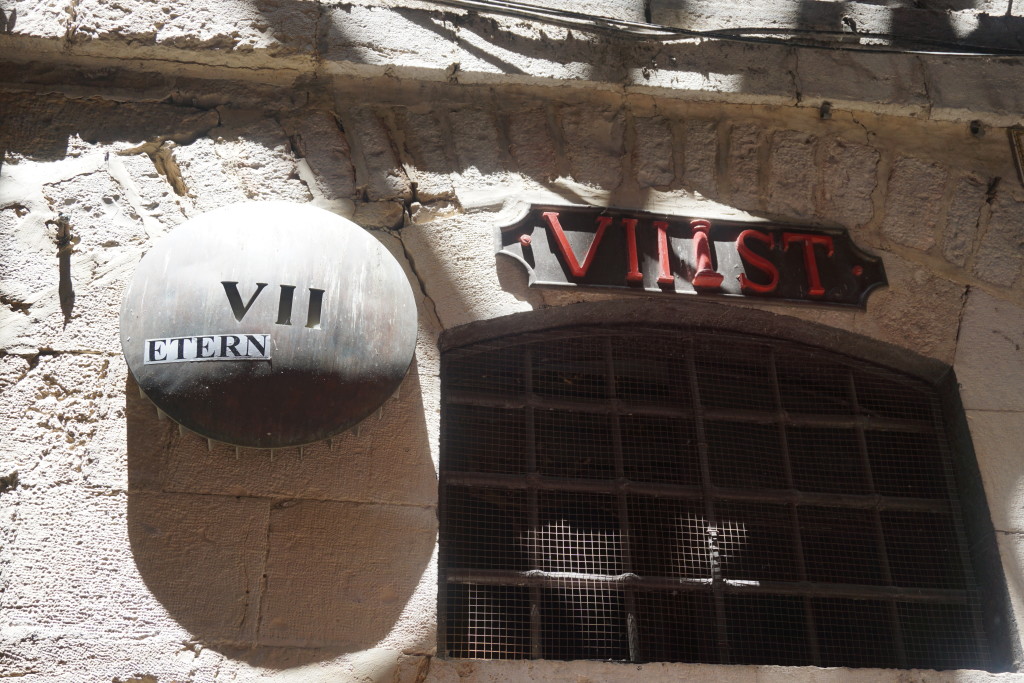
As we make our way through another tunnel to the other side of Old Jerusalem, I notice the yellowish stone houses with their lovely flower covered windows and gardens.
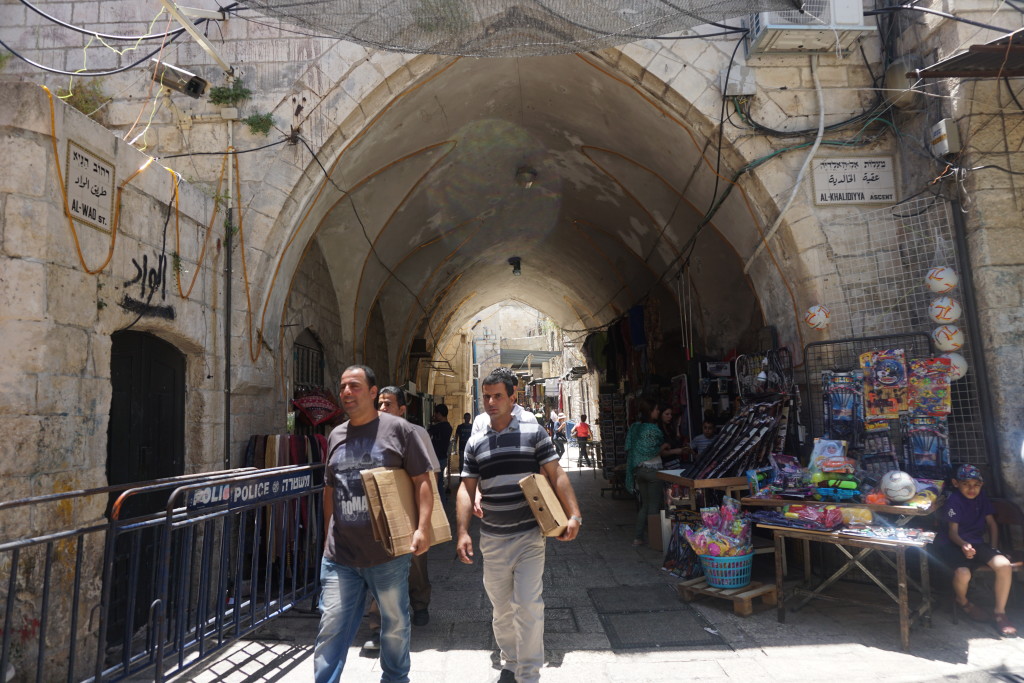
Our group stops for a lunch break at Panoramic View Cafe(130 Aftemos Market) restaurant that our guide pre-selected. Fortunately, when he inquired about the falafel sandwich ingredients, the staff assured him that it was indeed vegan and fried in separate fryer of vegetable oil. My falafel sandwich topped with salad, in a large pita bread was really good. I washed it down with some orange juice, which is very popular in Israel. Jerusalem is quite vegan-friendly! You also get a spectacular rooftop view of the city.
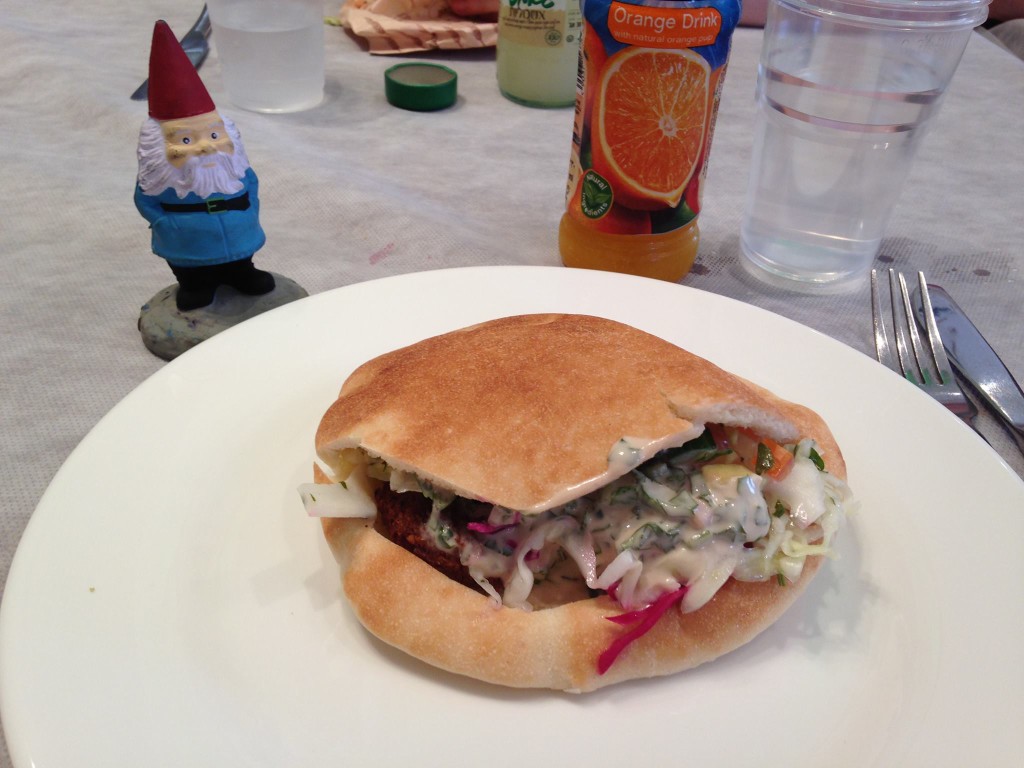
From the rooftop dining area where we ate, overlooks a glorious panoramic view of Old Jerusalem.
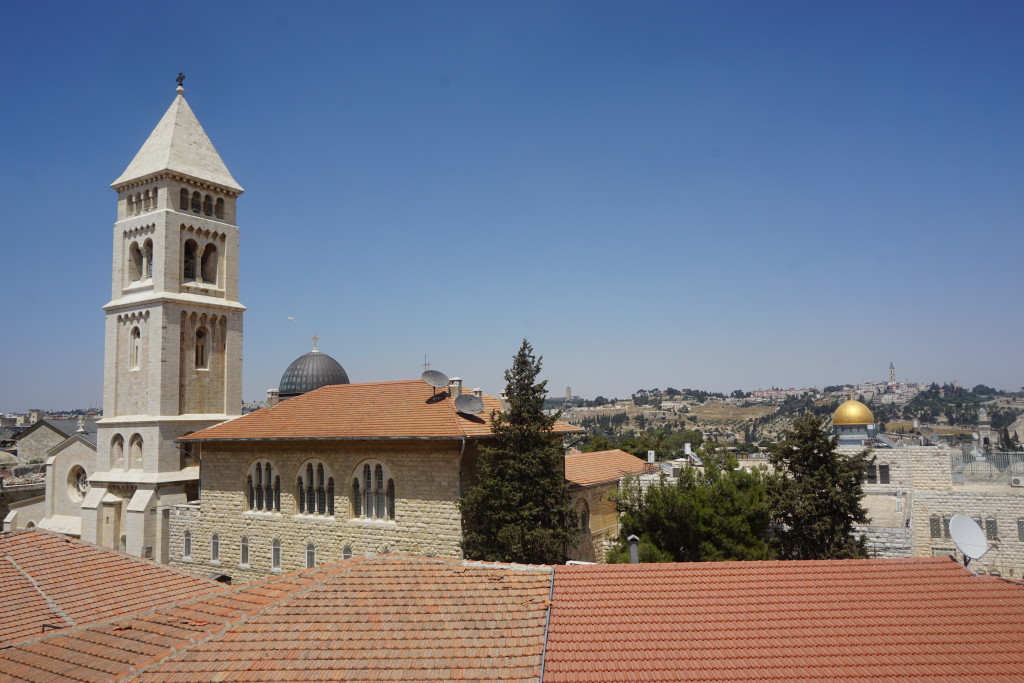
Pillars stand among the Roman market ruins in the old city. We strolled through the Byzantine Cardo which was Jerusalem’s main road during the Roman era.
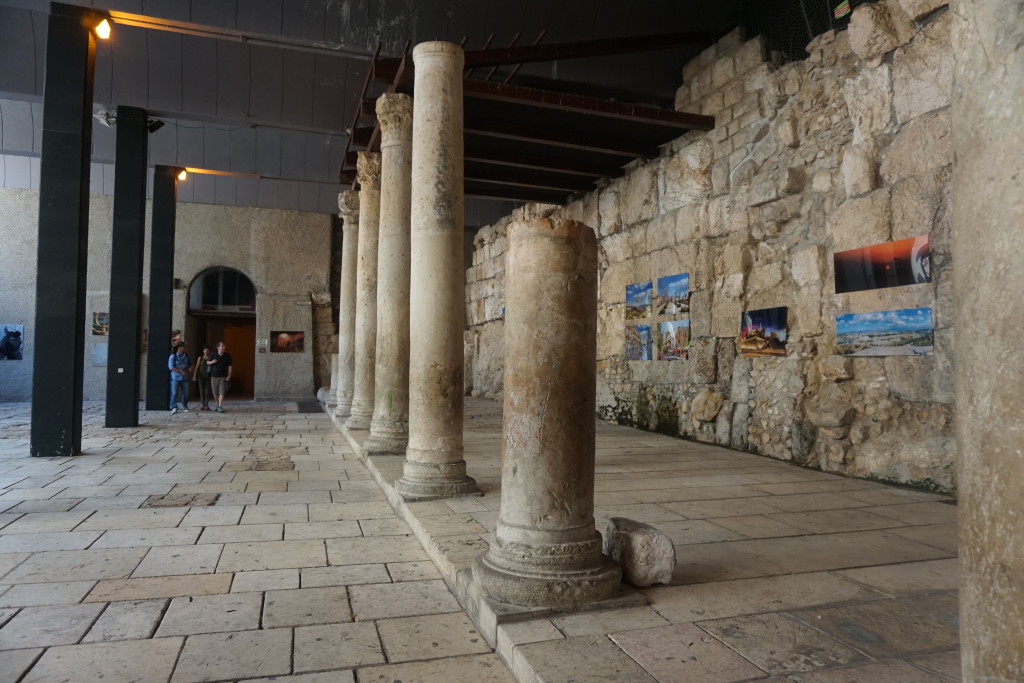
Crossing through the Zion Gates, we passed the Church of Saint James in the Armenian Quarter.
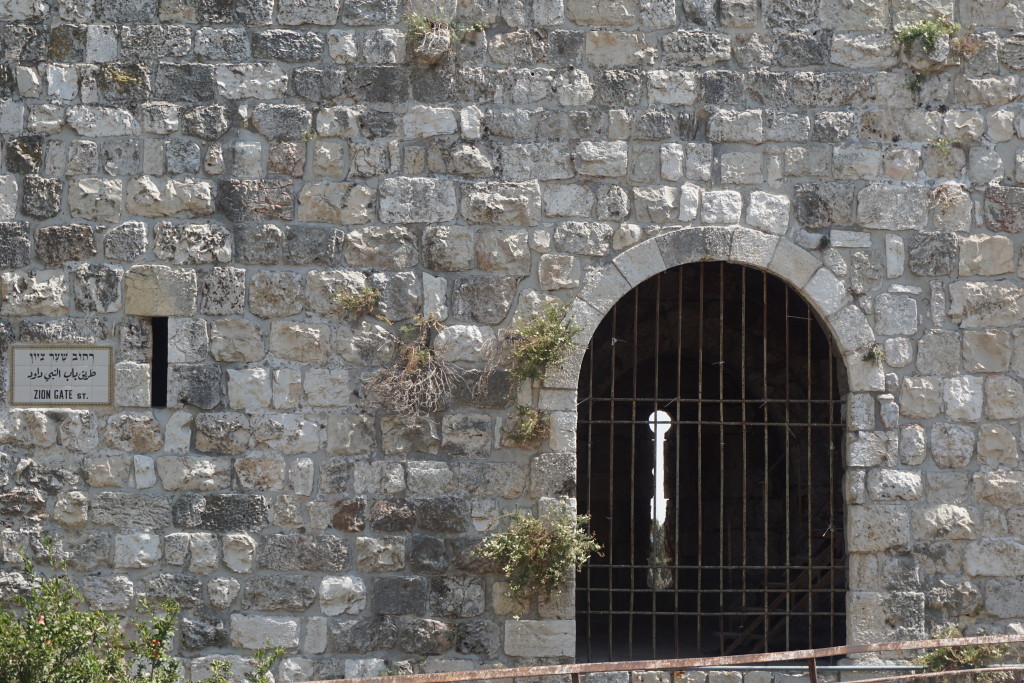
Street vendors were selling a tasty assortment of vegan-friendly dried fruits and nuts.
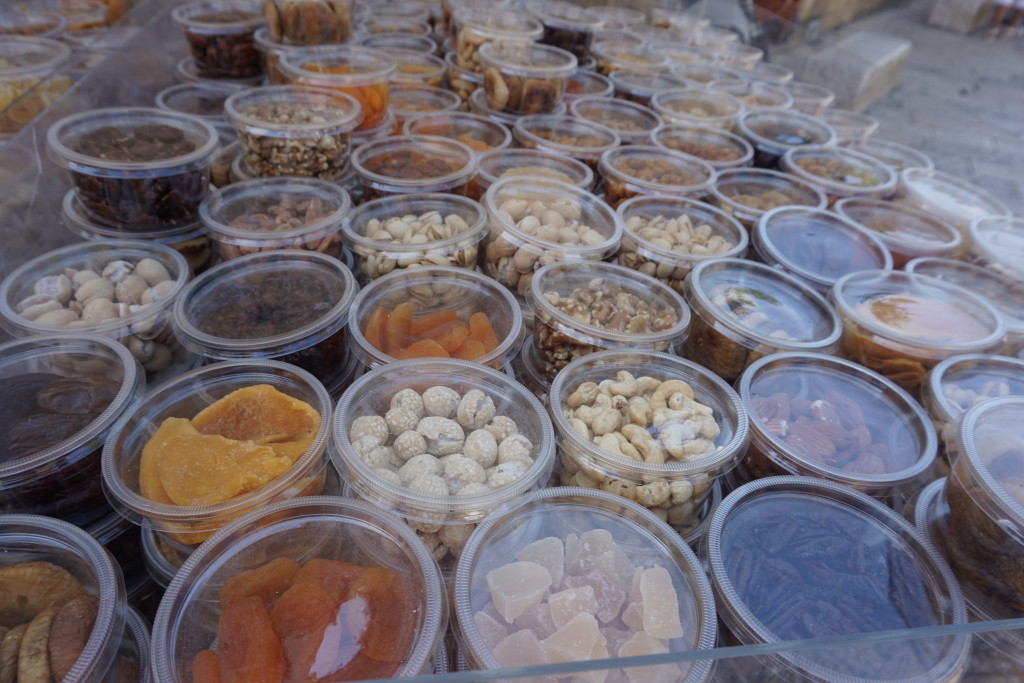
The old city comes alive with yellowish stone homes and shops, accented with vibrant colorful flowers in the gardens.
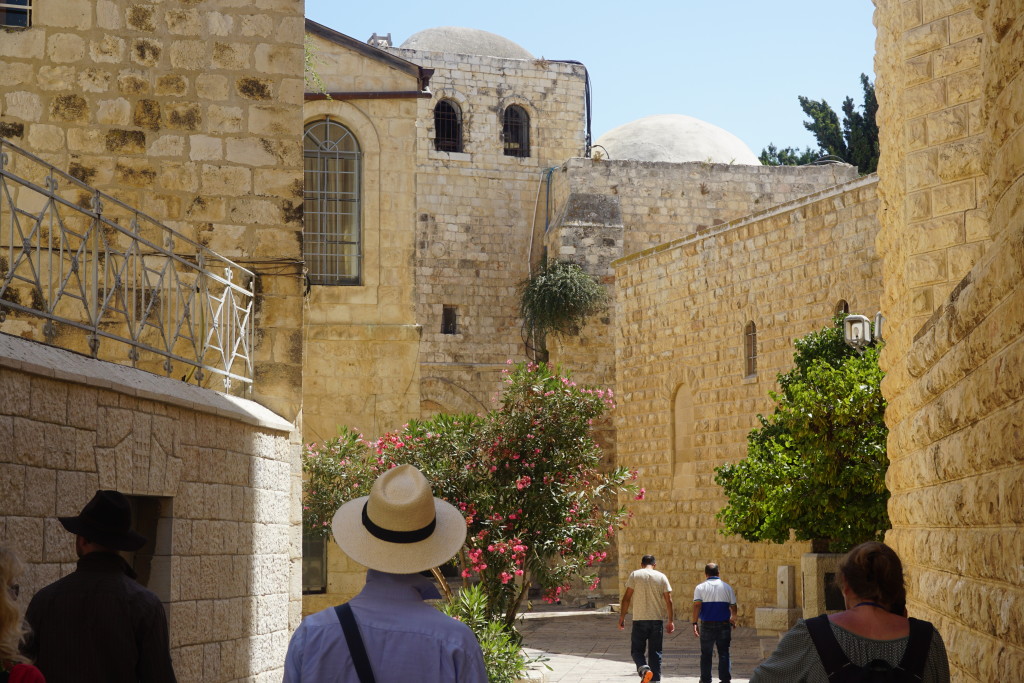
We arrive at the building located over the spot which is believed to have been occupied by the Room of the Last Supper. It is housed on the second level. The lower level is by tradition, thought to be King David’s tomb.
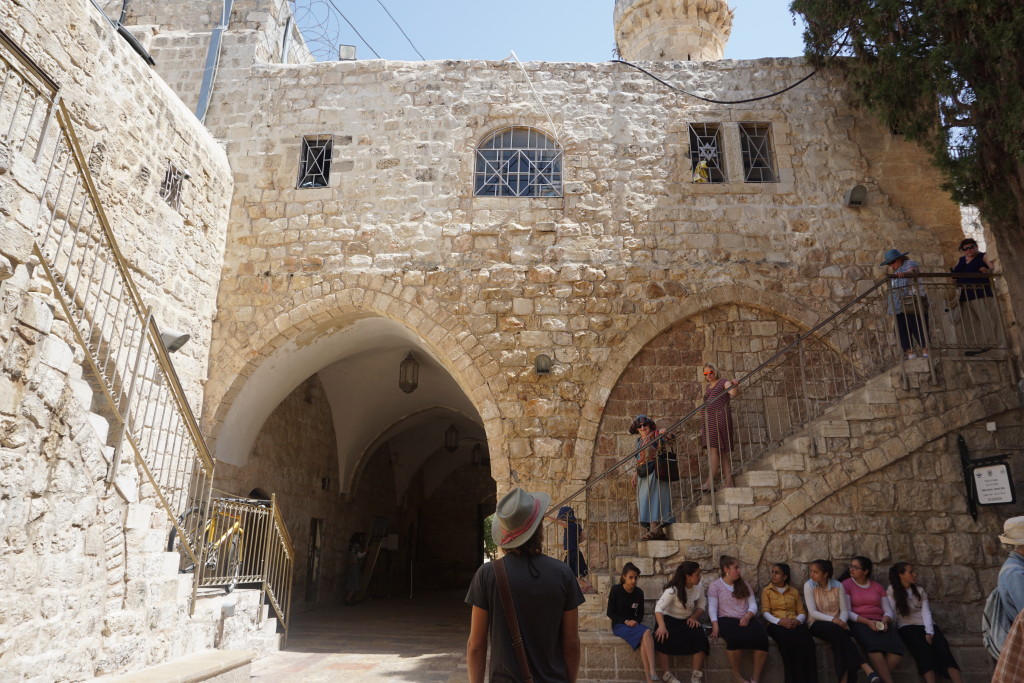
Our group entered through a side door.
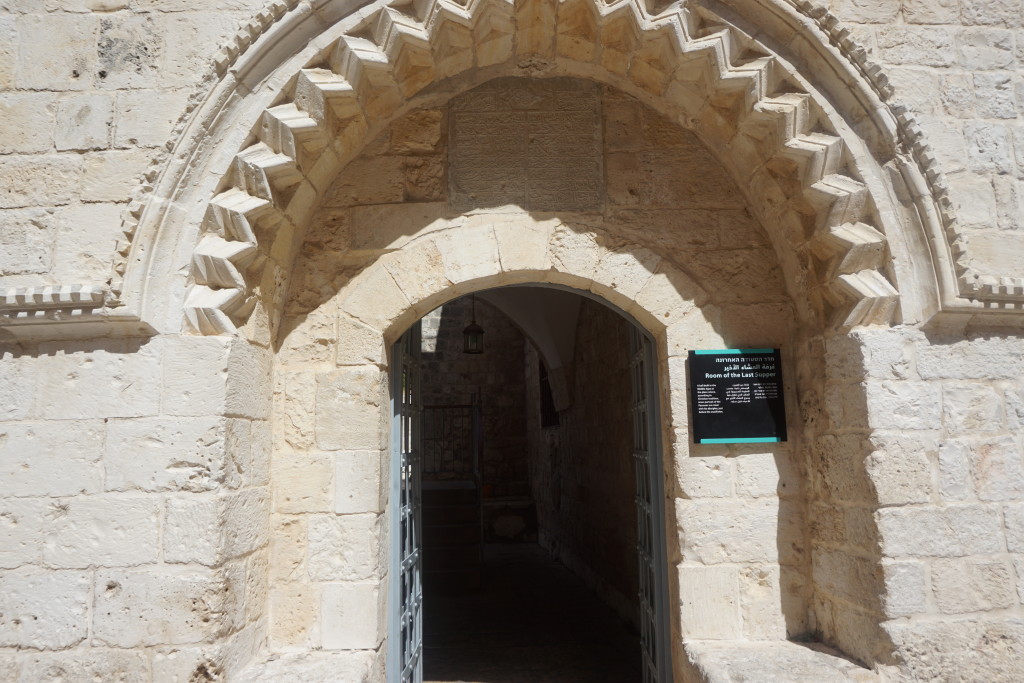
The current building is thought to be built sometime between the 12th to 14th century. The “Cenacle” (Upper Room) is where Jesus ate his last Passover meal, the disciples feet were washed, Jesus appeared after his resurrection, and where the Holy Spirit descended upon the disciples during Pentecost.
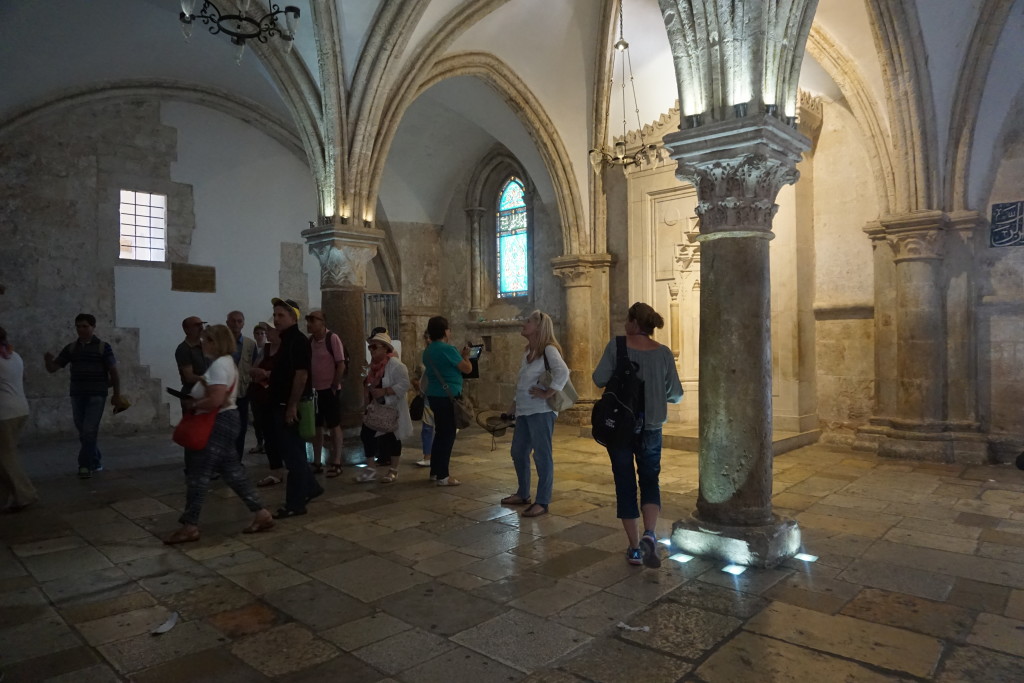
We then wandered down to the Church of the Dormition or “Dormition Abbey”. The original structure was a Byzantine basilica, built by the bishop of Jerusalem in the 5th century. The modern building was erected by architect Heinrich Renard of Cologne, Germany after he discovered the foundation of the war-ravished earlier church. The new foundation was laid in the year 1900. Tradition holds that the Virgin Mary died here. In Orthodoxy and Catholicism, death is referred to as “sleeping”, hence the name “Dormition”. Catholics believe that her body and soul ascended into heaven from here.
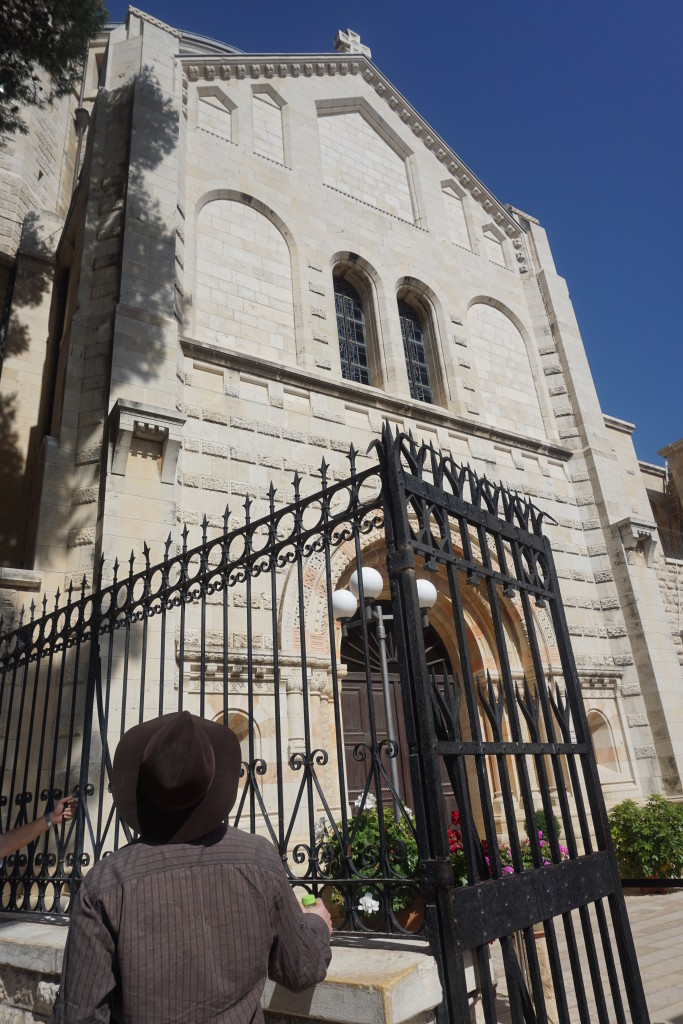
The inside of the church is gorgeous with its icons and religious symbolism.
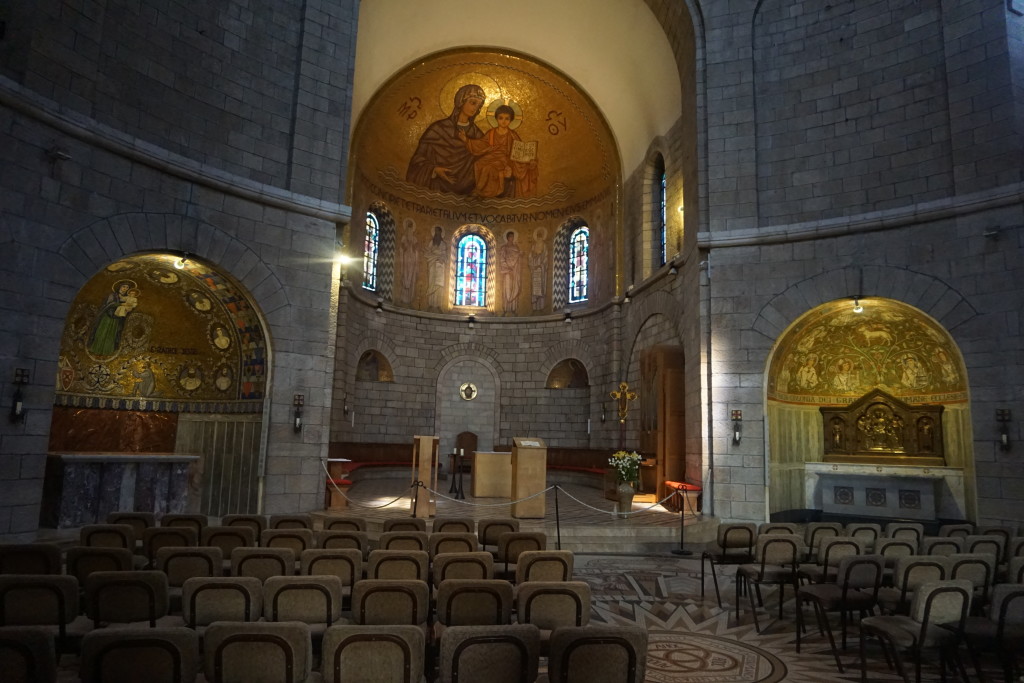
Names of disciples are spelled out in the tiled flooring.
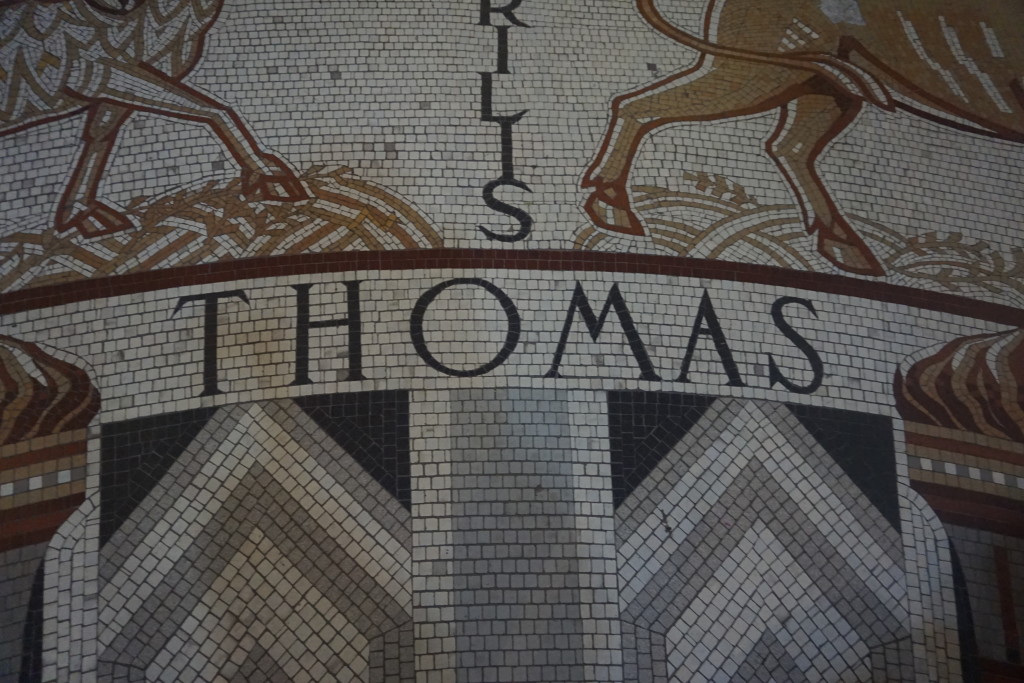
The crypt of the Virgin Mary lies beneath a lower level in the church.
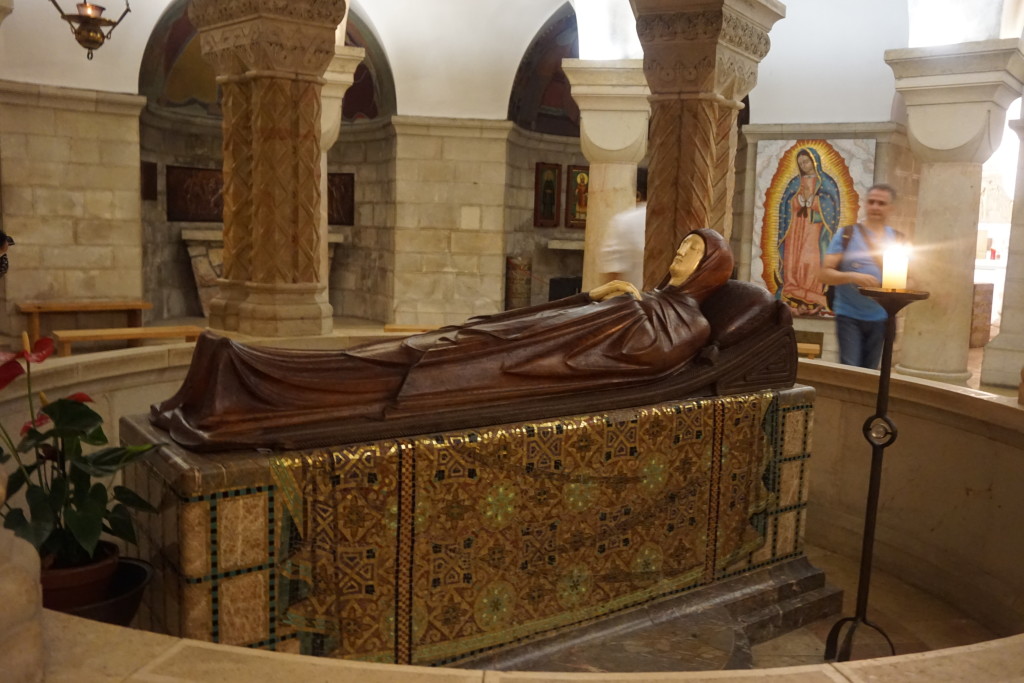
Our day tour had completed by early evening. However, when we arrived back in Tel Aviv, my night had just begun! I decided to stroll along several of the spectacular coastal beaches, from Jaffa port up to Jerusalem Beach near central Tel Aviv.
Some sections had a wooden boardwalk, while further up the shore, visitors walked on paved pathways.
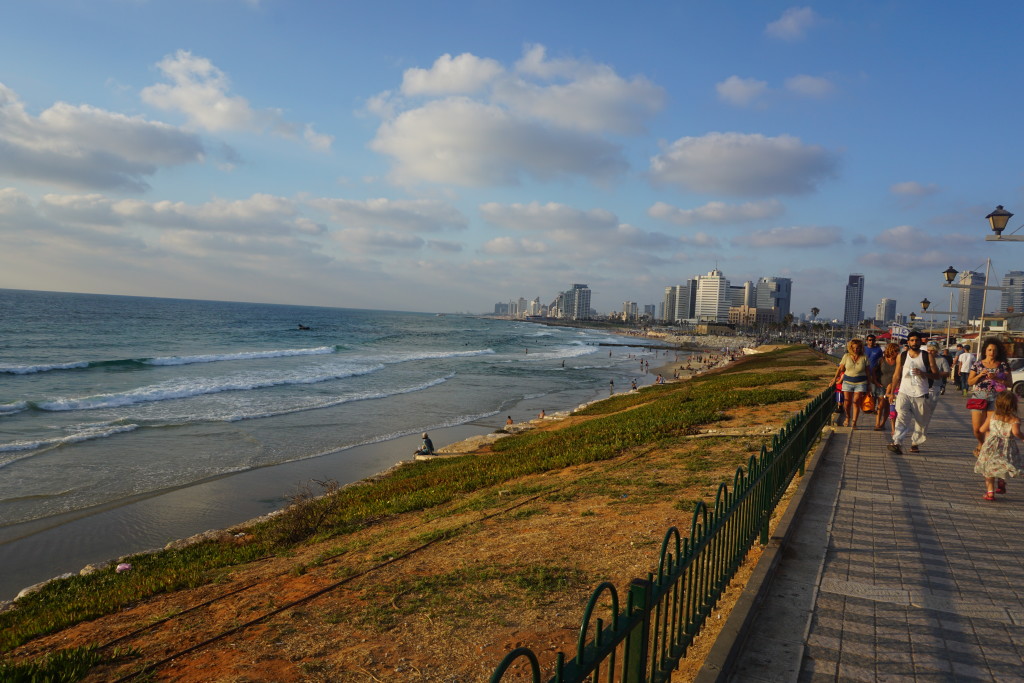
Palm trees dotted the skyline, along the way. It was a beautiful and soothing sight!
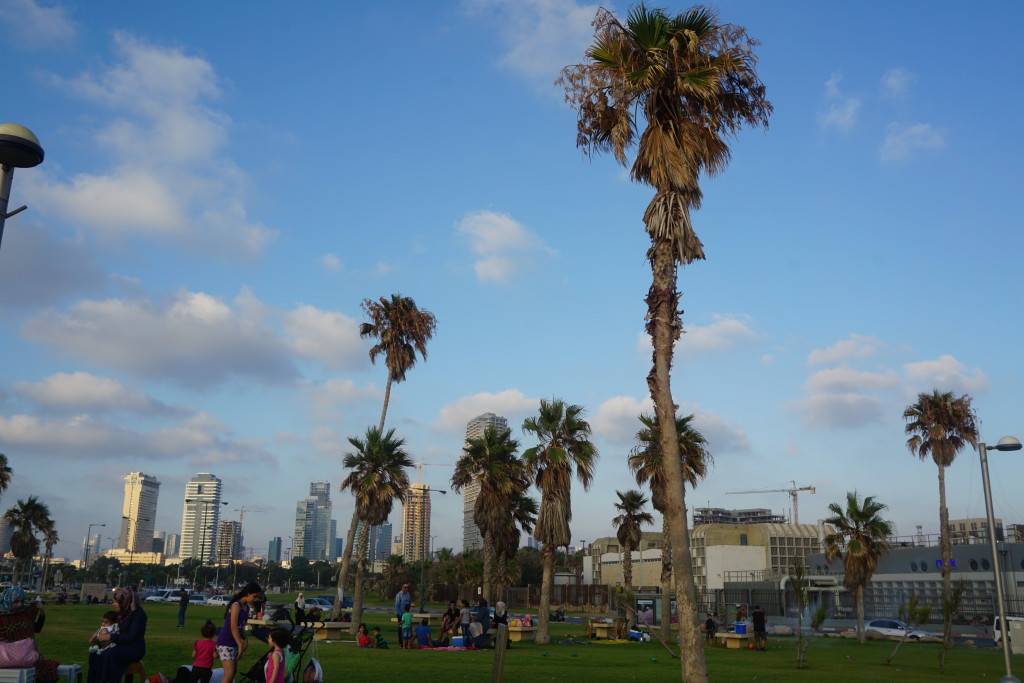
Sunset was drawing near during my journey by foot.
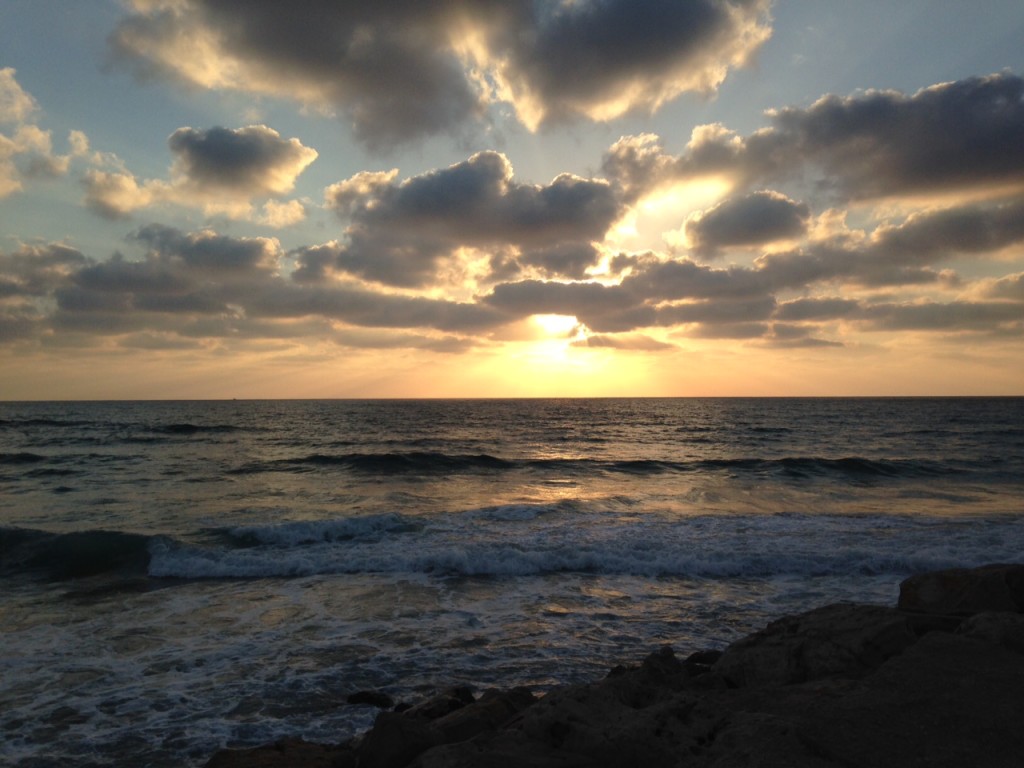
A few of the beaches possessed cabanas for sun-bathers to take a relaxing break.
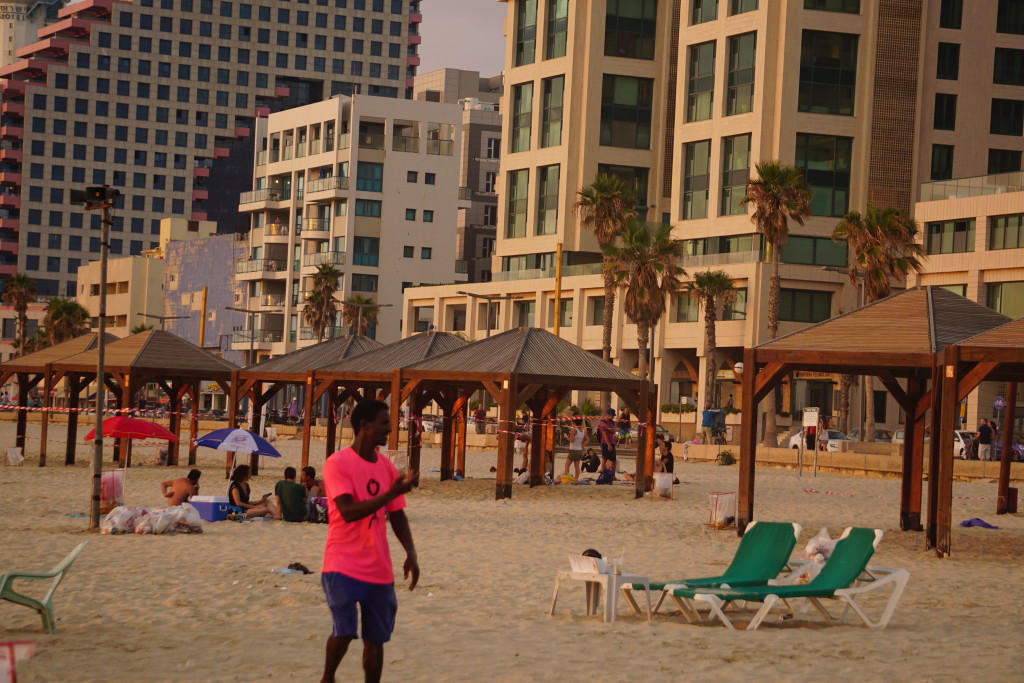
The lengthy, white sand beaches gave vacationers a spectacular spot to frolic and enjoy the water’s refreshing touch.
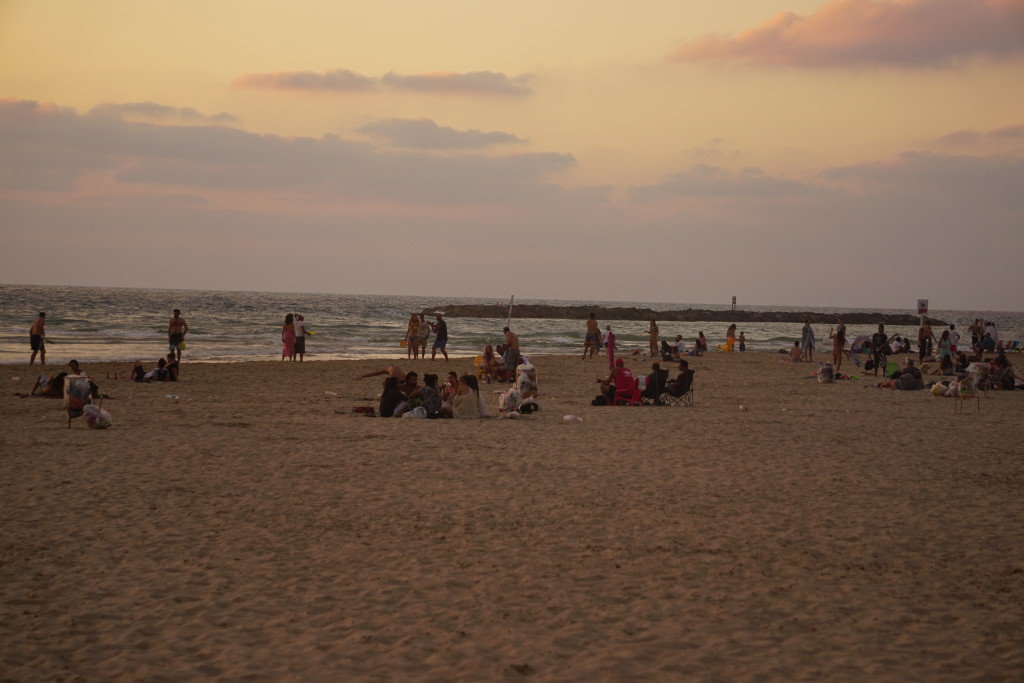
Finally, the sun had set. Magnificent shades of orange and yellow rays shimmered over the waters.
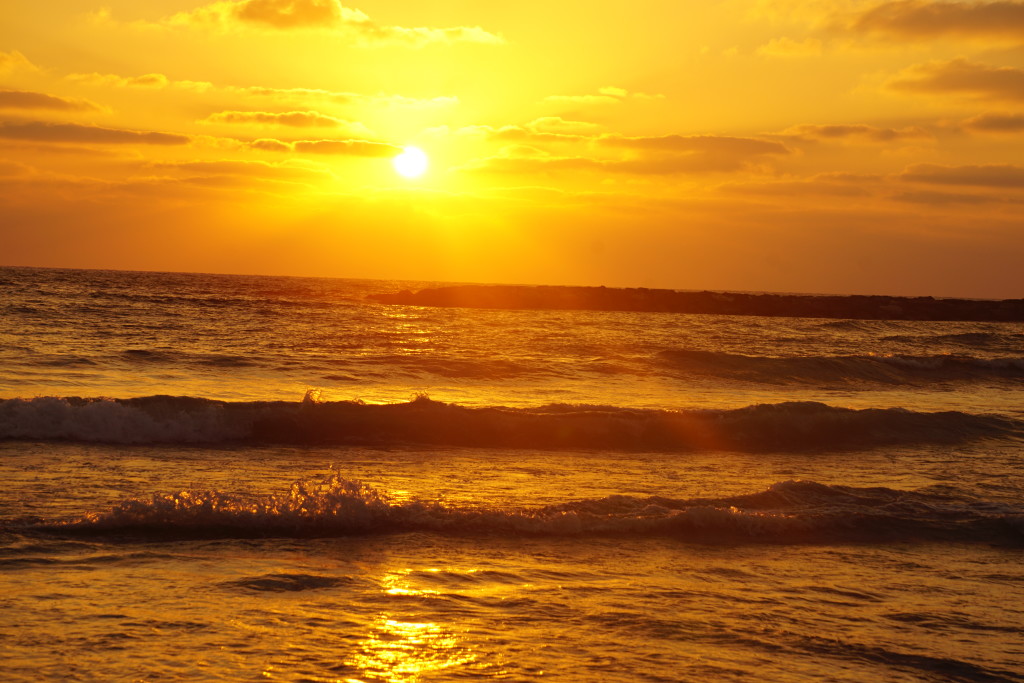
After a lengthy walk along the shore, my thoughts turned to dinner. I dined at a restaurant called “Puaa” (Puaa Restaurant) near my Jaffa hostel. One of the specials that night was listed as “I’m Vegan and I like it”. This delicious plate consisted of beets, leeks, black beans, tomatoes, string beans, carrots, and squash.
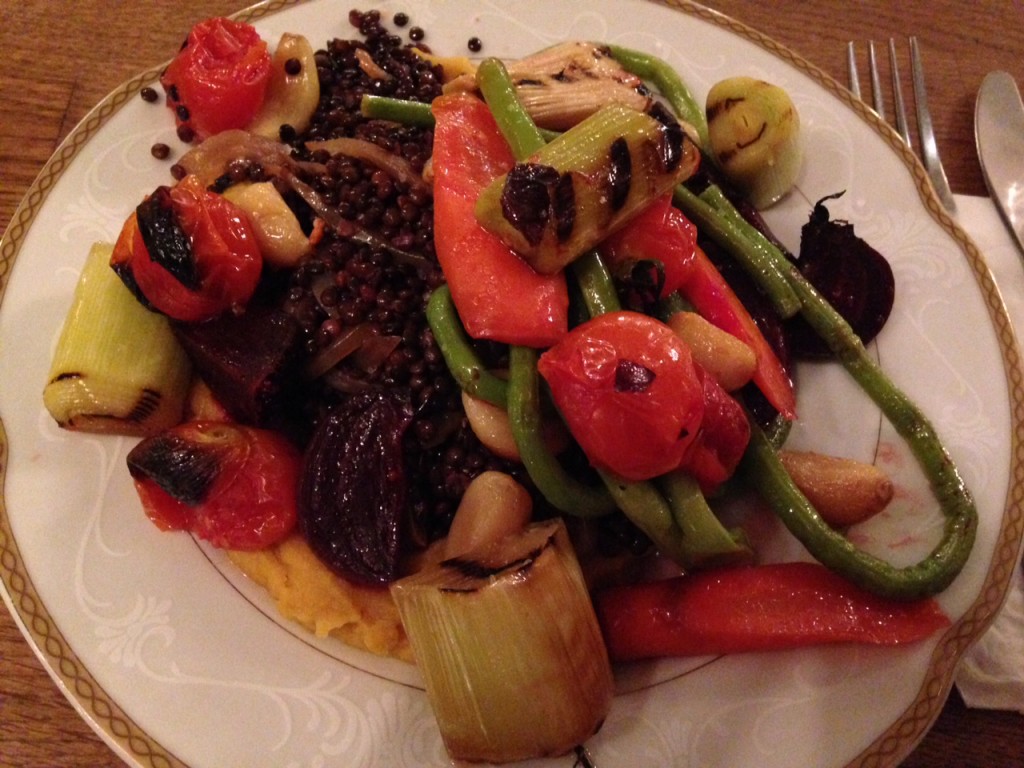
Hopping on the local bus made it quite easy for me to go about town during the evenings. After dinner, I went directly to Cafe Louise (Cafe Louise) to pick up a treat for the following morning’s breakfast. My apple crumble selection would fill me up before the next day’s tour would begin.
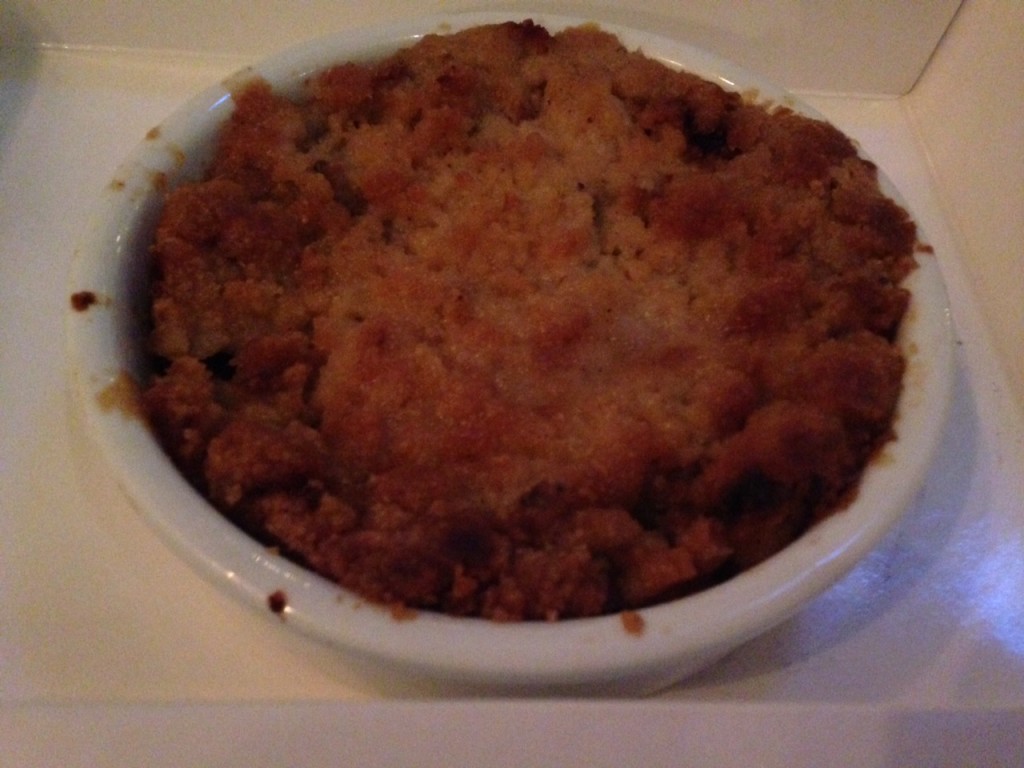
Tel Aviv is a mecca for vegan ice cream! This evening, I headed to Leggenda (Leggenda Ice Cream) for this cool summery treat! I chose a cup of fig and lime ice cream. The lime and fig taste were superb!
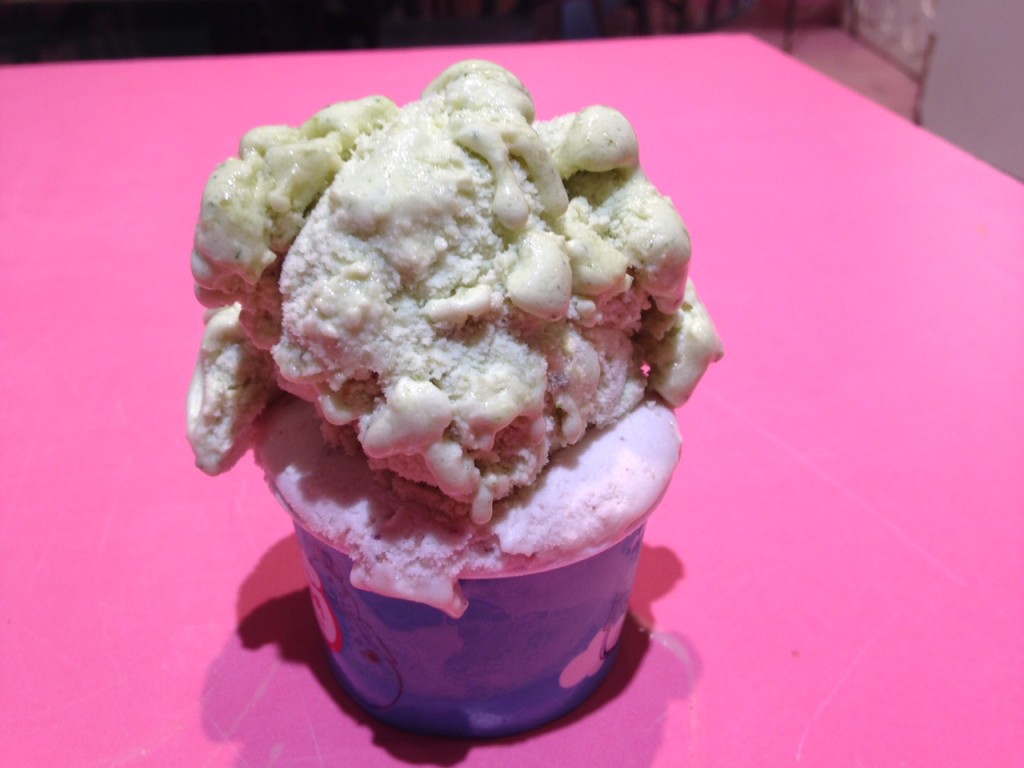
I noticed yet another vegan-friendly ice cream shop in the neighborhood! Iceberg(Ben Yehuda St 108) proudly displayed a “vegan” sign on their window.
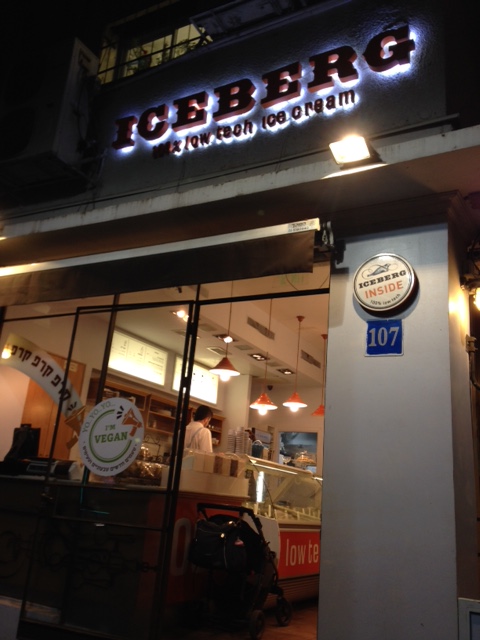
I peered inside to check out the expansive variety of vegan flavors.
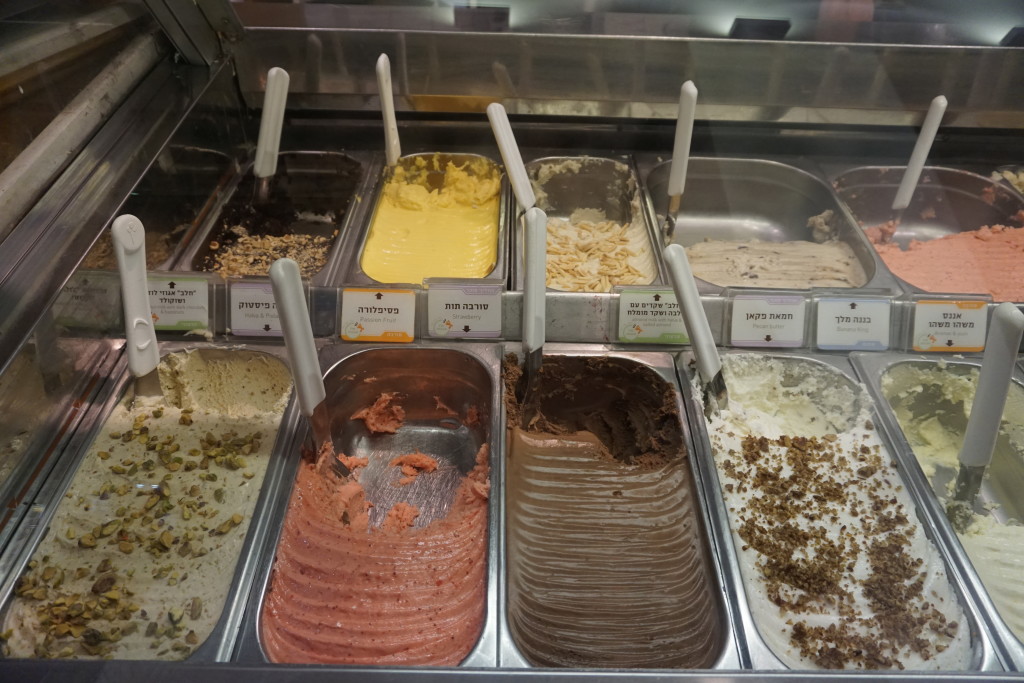
It was time to call it a night and get back to my Old Jaffa Hostel. Another day of incredible sightseeing in Israel had been a both and poignant and joyful experience. My longtime dream to see and experience the biblical sites of Jerusalem had come into fruition on this day.
And Israel was continuing to please as a very vegan-friendly country. Upon arrival back to my hostel, I looked forward with anticipation to the following day’s exploration of Bethlehem and Jericho.
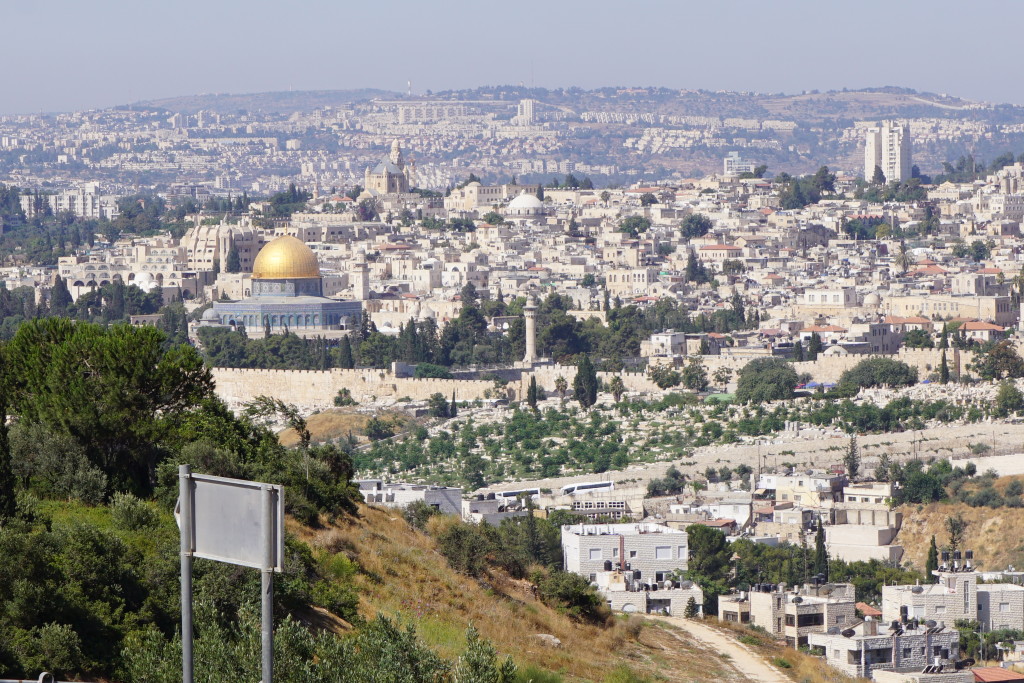
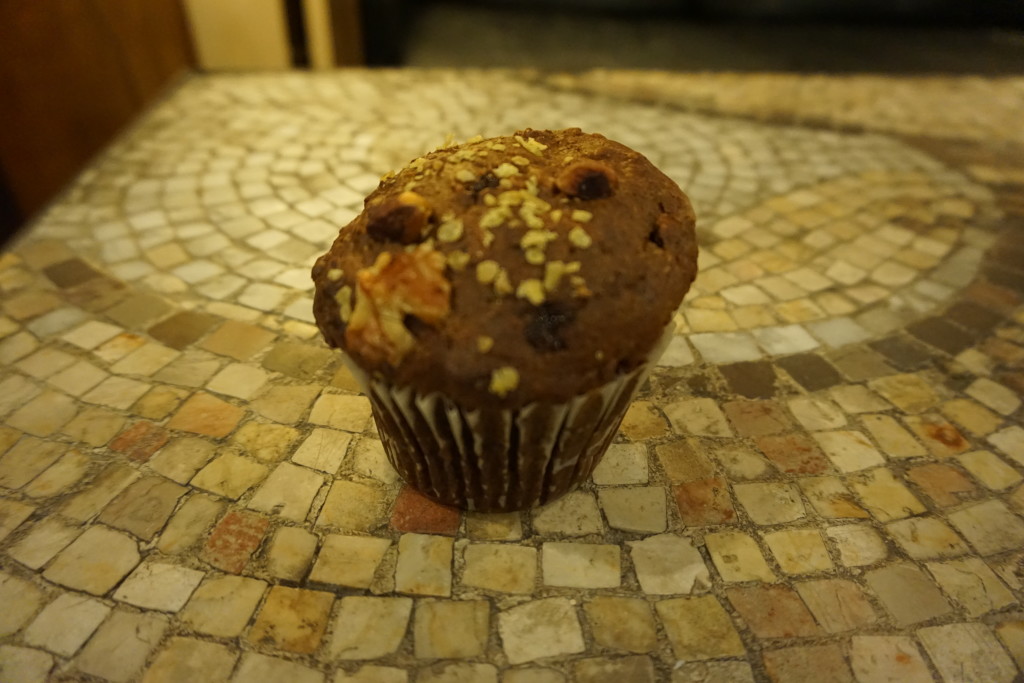
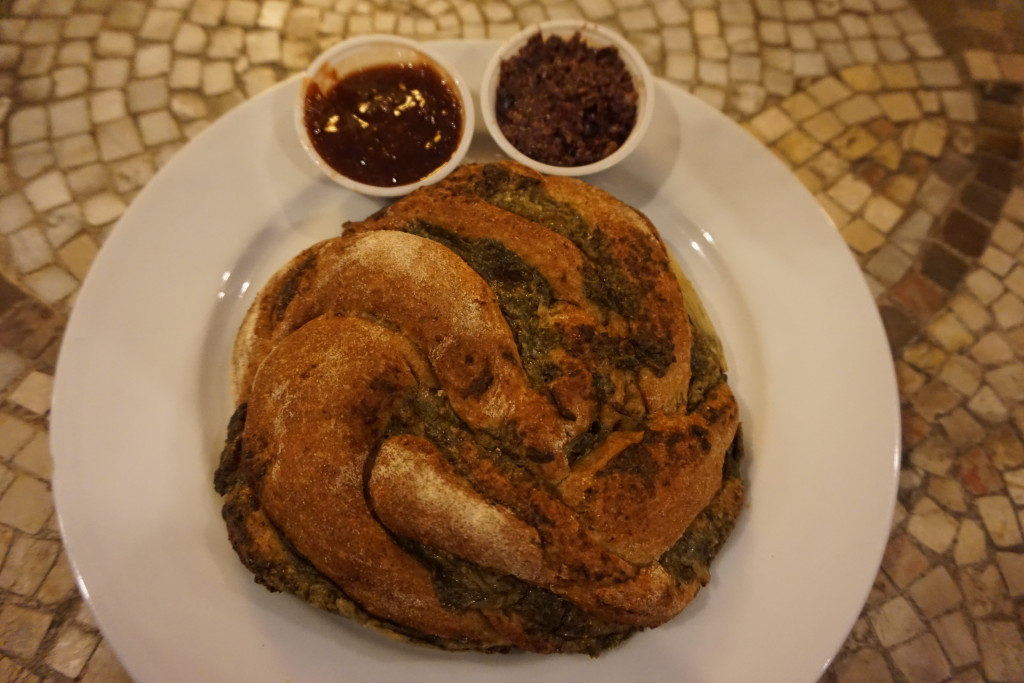

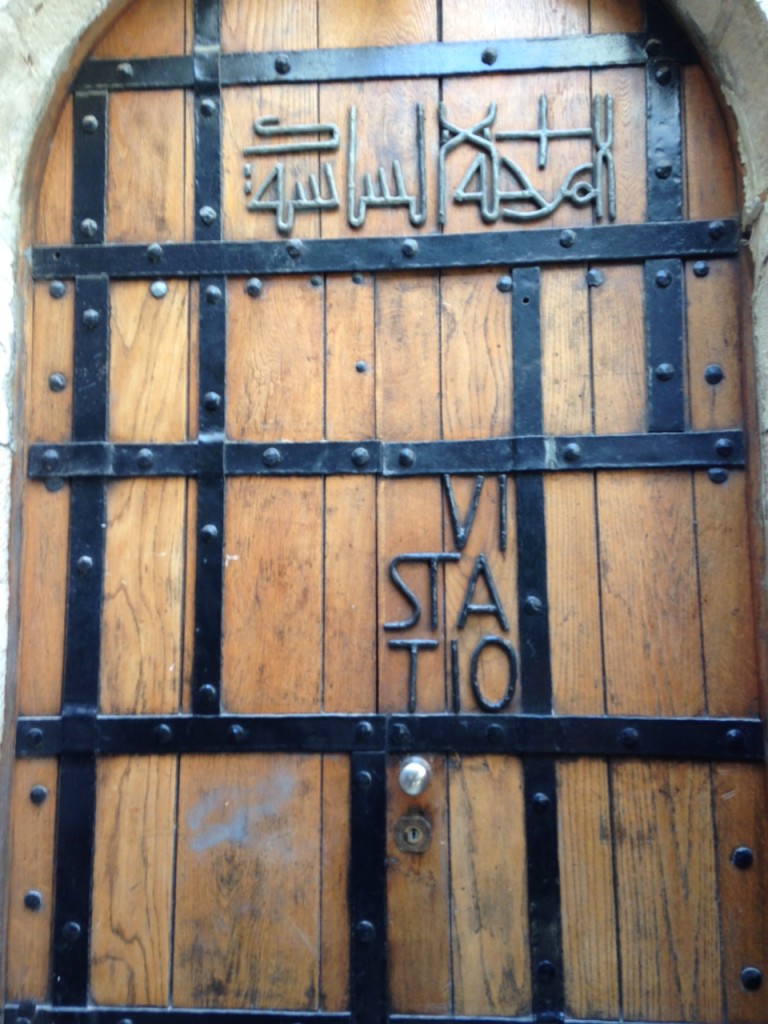
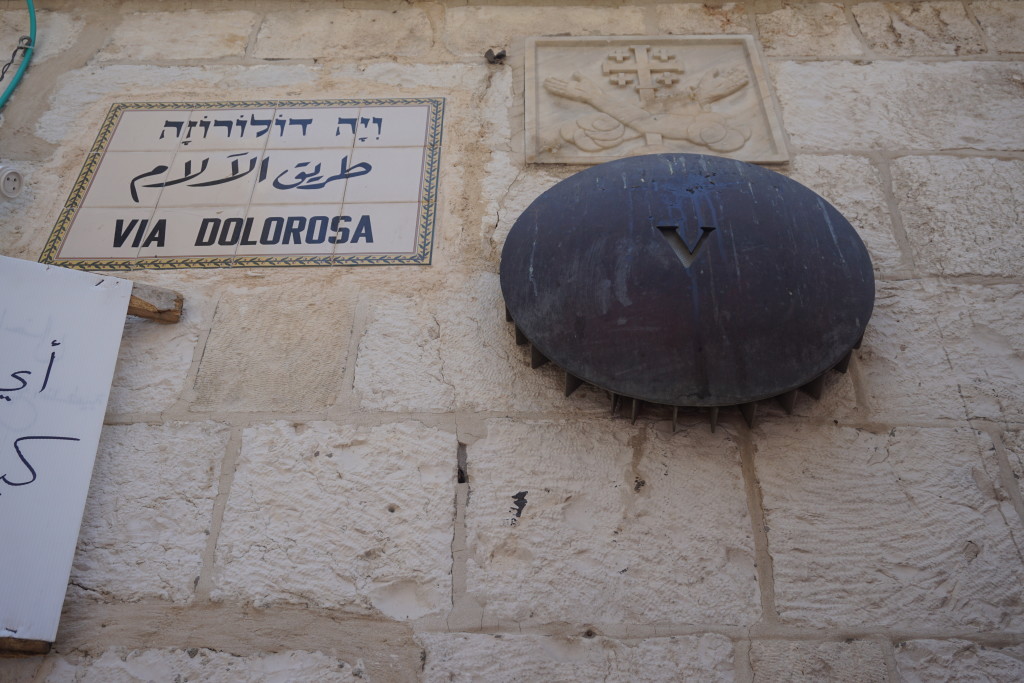
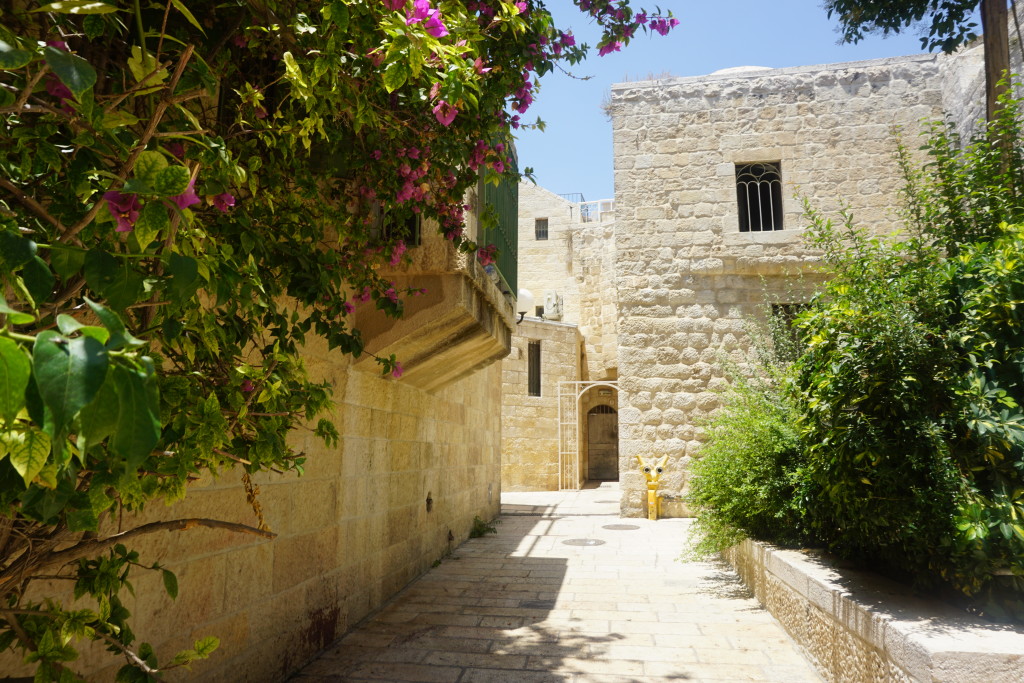
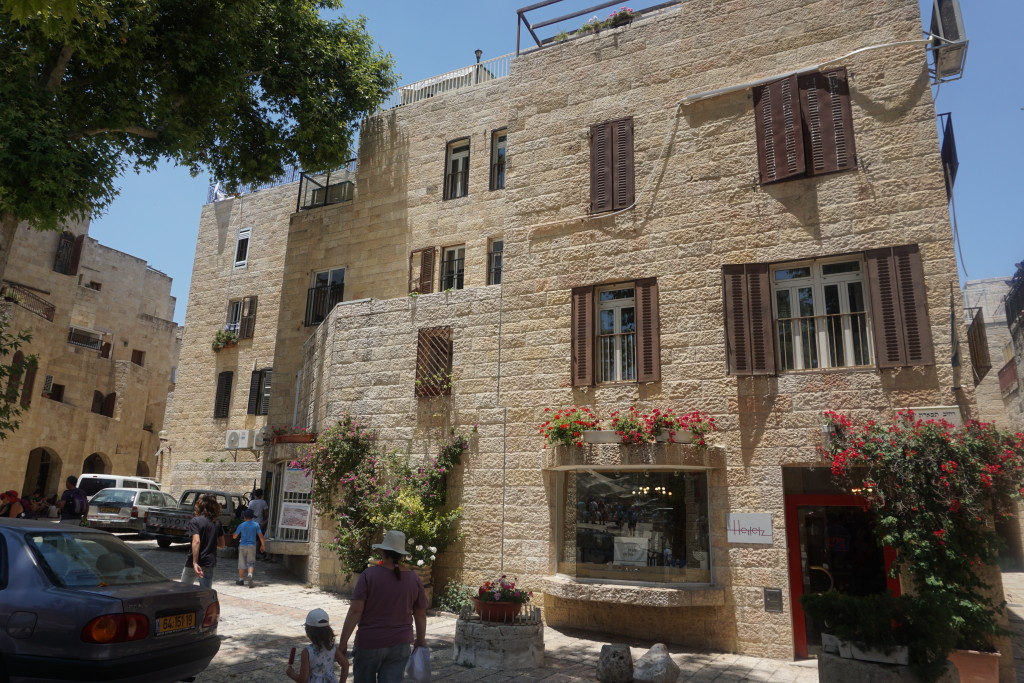
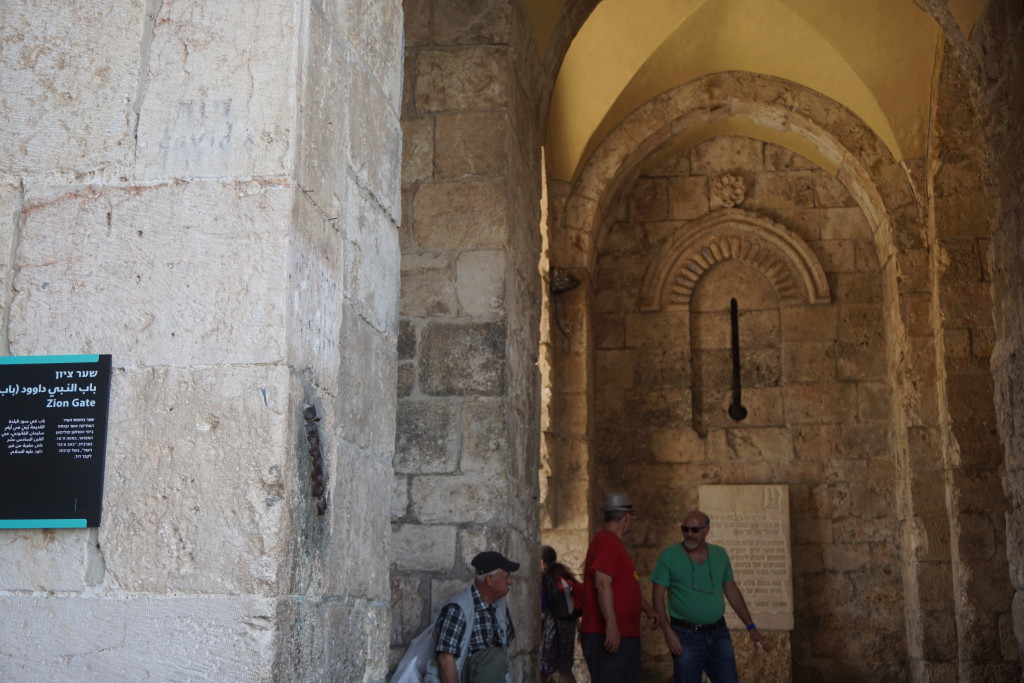
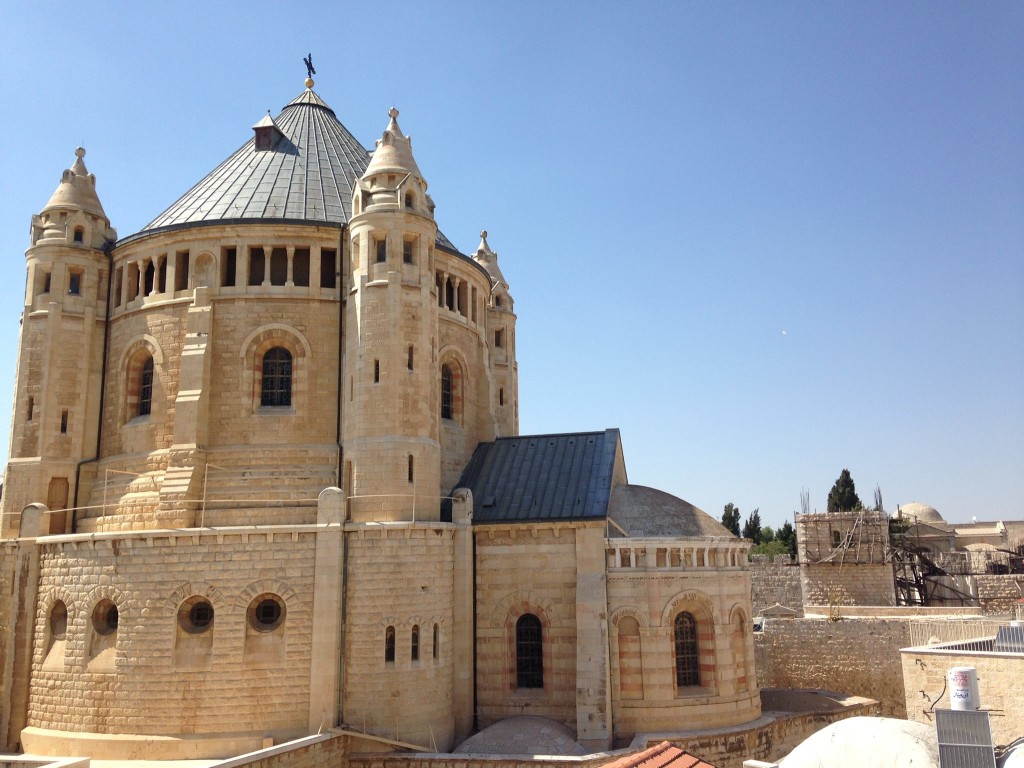
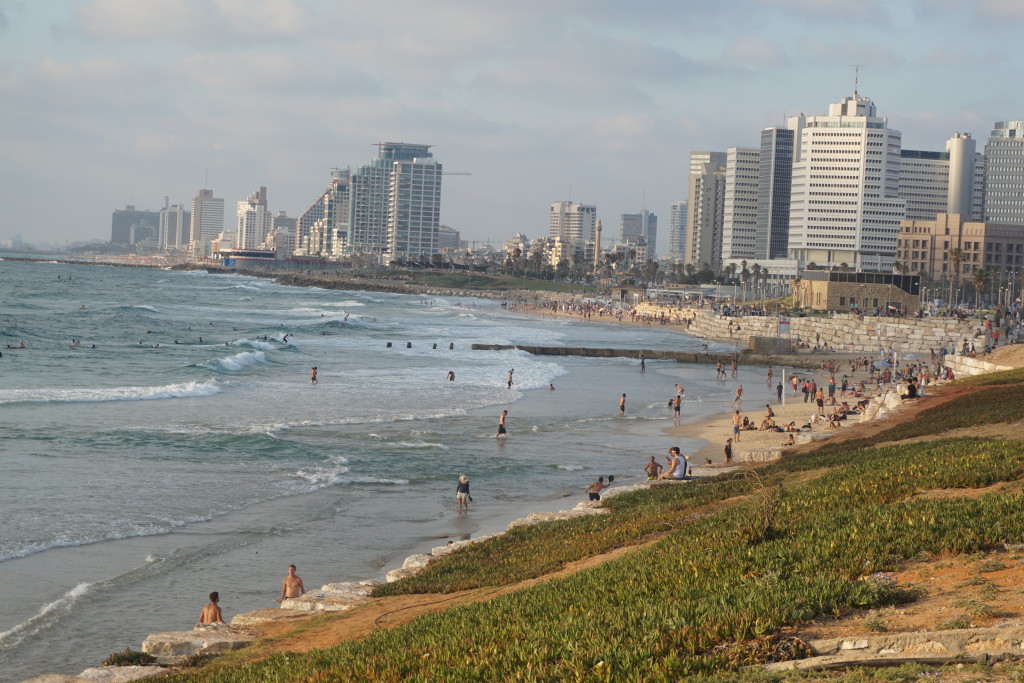
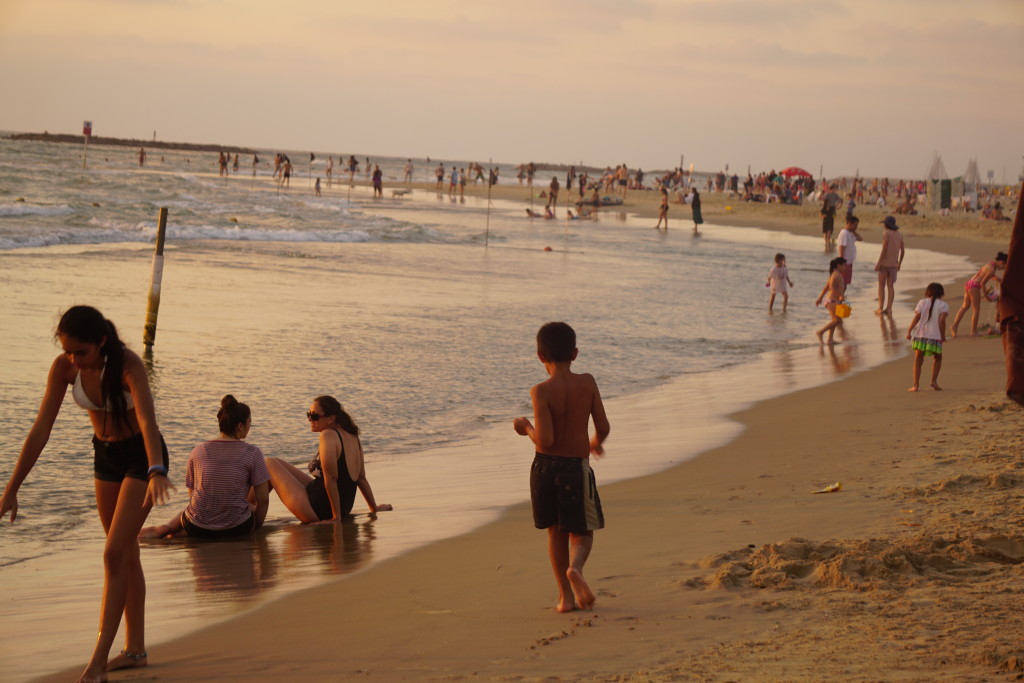
It looks like you had an amazing day filled with beautiful sights and amazing vegan food. Now I want to visit Jerusalem!